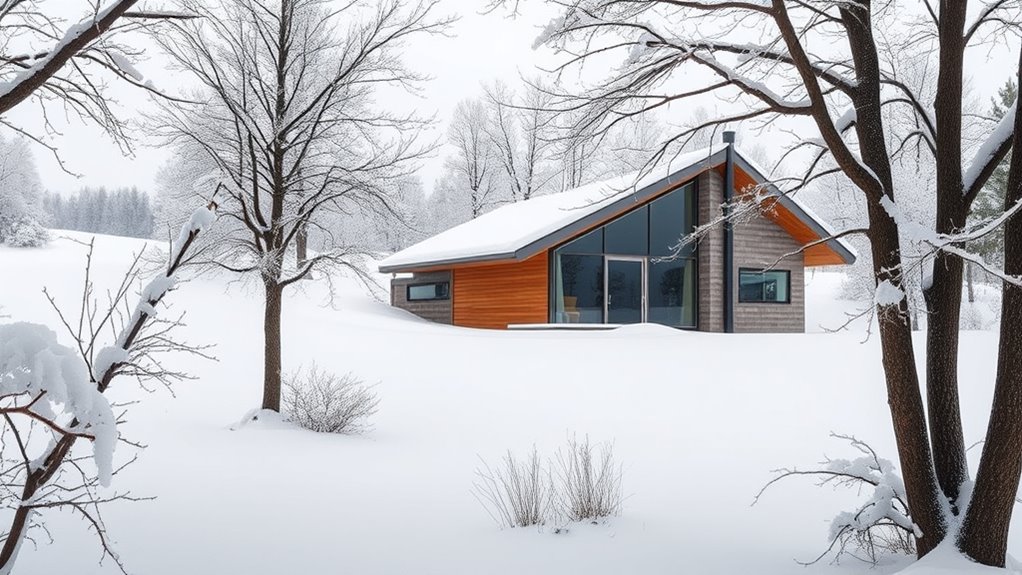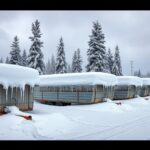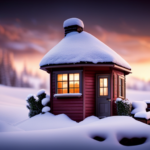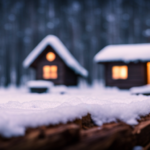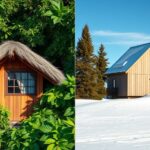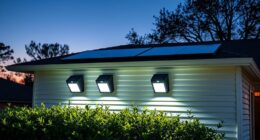Imagine a home nestled against a heavy snowfall, its walls holding firm despite winter’s relentless grip. When designing for snowy climates, your choice of floor plan can make all the difference in preventing expansion damage and maintaining warmth. The right layout not only shields your investment but also keeps your family comfortable during the coldest months. Curious how to build a resilient, snow-proof home? Keep exploring these top design strategies.
Key Takeaways
- Design compact layouts with fewer exterior walls to reduce wind exposure and thermal bridging.
- Incorporate an entryway or mudroom to trap snow and prevent cold drafts inside.
- Position main living areas on the south side for optimal passive solar heating.
- Use large, high-quality south-facing windows with proper insulation to maximize natural warmth.
- Ensure the floor plan includes well-insulated, sealed foundation and floors to prevent expansion and contraction damage.
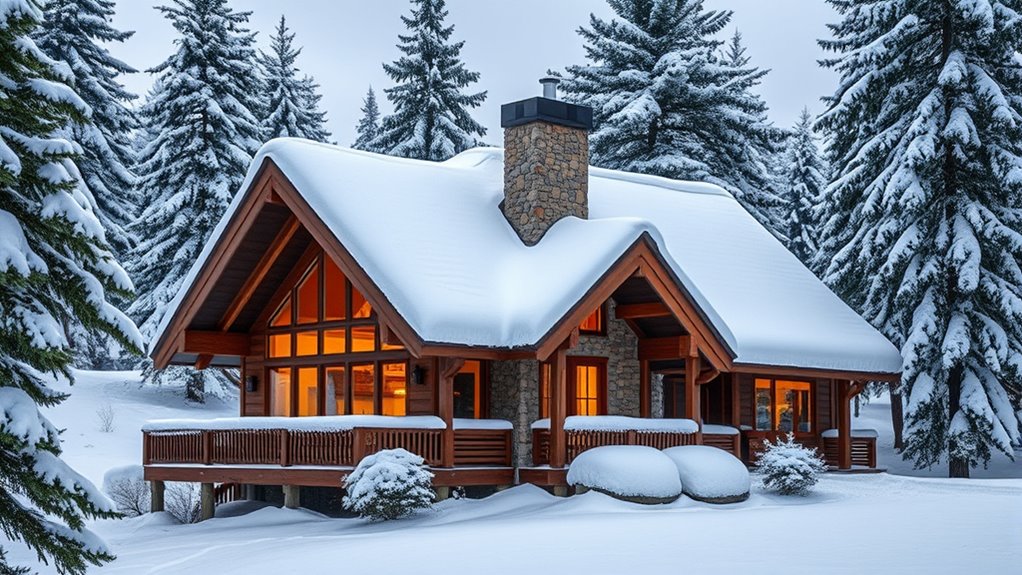
Are you planning a home in a snowy climate and wondering how to design it for maximum comfort and efficiency? One of the most vital considerations is choosing the right floor plan and construction methods to withstand harsh winter conditions without risking expansion damage. Snowy climates demand more than just aesthetics; they require a strategic approach to insulation techniques and heating system options to keep your home warm, safe, and energy-efficient throughout the cold months.
When it comes to insulation techniques, you want to prioritize high-quality, continuous insulation that minimizes thermal bridging. This means using rigid foam boards or spray foam insulations that seal gaps and create a seamless thermal barrier. Properly insulating your walls, roof, and foundation prevents heat loss and reduces the risk of expansion and contraction that can cause structural damage over time. In snowy environments, it’s also wise to incorporate insulated concrete forms (ICFs) or insulated wall panels to provide extra thermal resistance, especially in areas prone to heavy snowfall. These techniques keep the interior warm and reduce the strain on your heating system, ultimately saving you money and preventing ice dam formation on your roof. Additionally, selecting proper construction materials that can withstand freeze-thaw cycles is essential for long-term durability.
Your choice of heating system options is equally vital. Many homeowners in snowy climates opt for radiant floor heating because it evenly distributes warmth from the ground up, reducing cold spots and maintaining a consistent indoor temperature. This system pairs well with well-insulated floors and foundations to prevent heat loss through the ground. Alternatively, high-efficiency heat pumps combined with supplemental heating like wood stoves or boilers can offer reliable warmth while being energy-conscious. Consider installing a zoned heating system that allows you to control temperatures in different rooms independently; this way, you avoid wasting energy heating unoccupied spaces.
Designing a floor plan that minimizes exposure to harsh elements is also beneficial. Opt for a compact layout with fewer exterior walls exposed to the wind, and incorporate an entryway with a mudroom or vestibule to trap snow and cold air. Positioning living spaces on the south side of the house maximizes passive solar gain, reducing reliance on your heating system. Incorporate large, south-facing windows with quality glazing to capture sunlight and help warm your home naturally.
In snowy climates, a well-thought-out floor plan combined with effective insulation techniques and versatile heating system options guarantees your home remains warm and resilient without suffering expansion damage. These strategies not only enhance comfort but also protect your investment against the relentless cold and heavy snowfall, keeping your home safe and cozy for years to come.
Conclusion
With these smart floor plans, you’ll create a cozy refuge nestled against the snow’s icy embrace. Imagine curling up inside, where thick walls and south-facing windows invite the warm glow of sunlight, while the compact layout keeps winter’s chill at bay. Your home becomes a fortress of comfort, resisting the harshest storms and freeze-thaw cycles. Embrace the peace of knowing your sanctuary is built to withstand winter’s fury, standing strong through every snowstorm that blankets the landscape.
Hi, I’m Emma. I’m the Editor in Chief of Tiny House 43, a blog all about tiny houses. While tree houses are often associated with childhood, they can be the perfect adult retreat. They offer a cozy space to relax and unwind, surrounded by nature. And since they’re typically built on stilts or raised platforms, they offer stunning views that traditional homes simply can’t match. If you’re looking for a unique and romantic getaway, a tree house tiny house might just be the perfect option.
